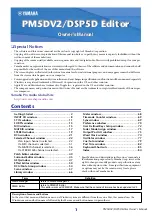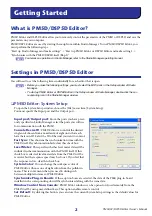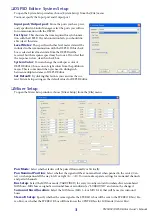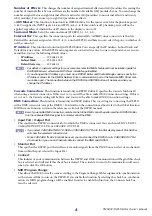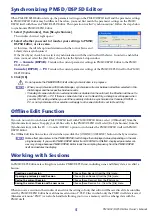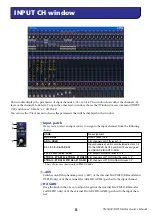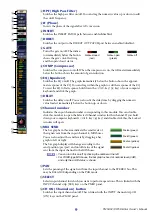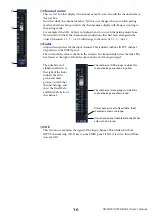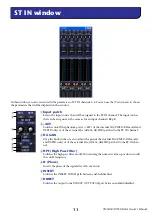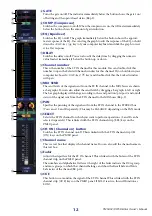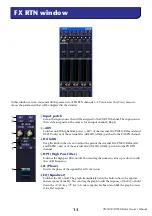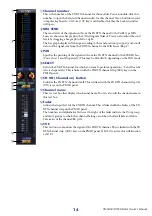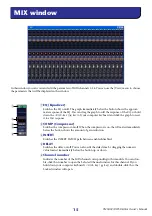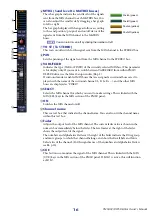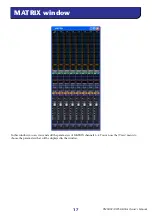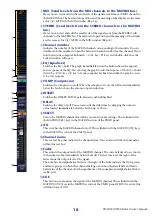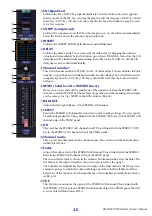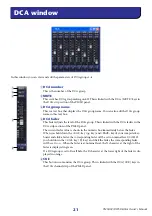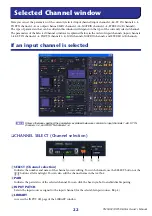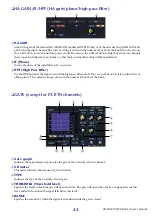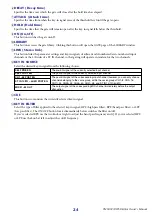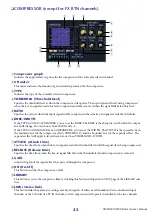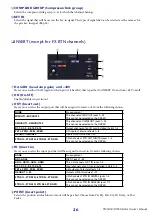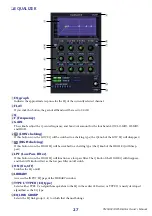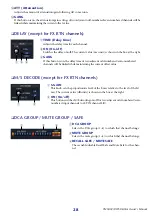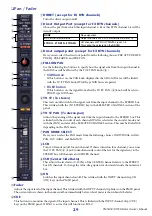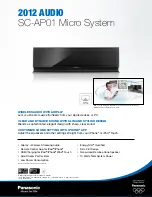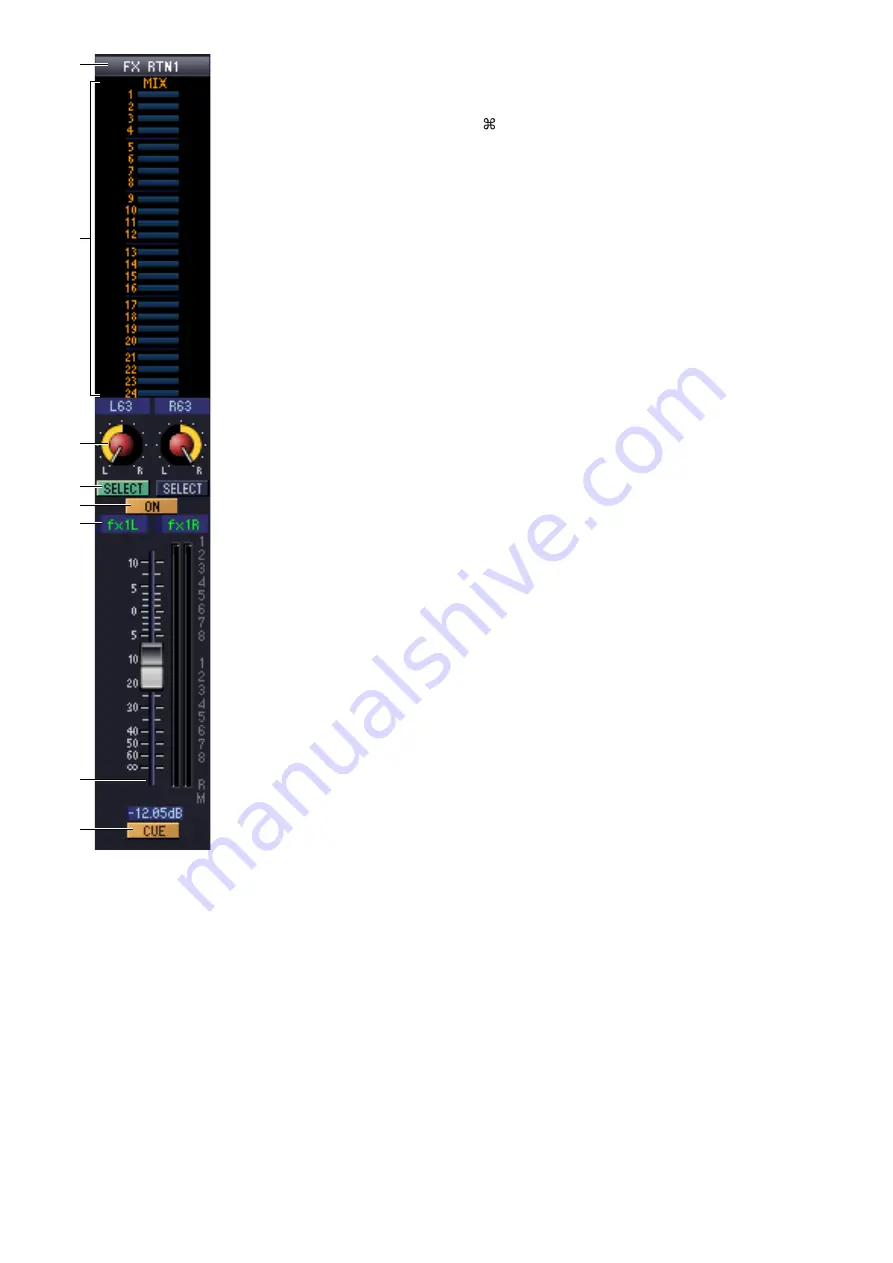
PM5DV2/DSP5D Editor Owner’s Manual
14
G
Channel number
This is the number of the FX RTN channel for this module. You can double-click this
number to open the Selected Channel window for this channel. If you hold down your
computer keyboard’s <Ctrl> key (
key) and double-click this, the Locked window
will open.
H
MIX SEND
The send levels of the signals sent from the FX RTN channel to the VARI-type MIX
buses are shown as bar graphs (the L/R settings are linked). You can also adjust the send
levels by dragging a bar graph to left or right.
The bar graph display will change according to the send position (pre/post) and on/off
status of the signal sent from the FX RTN channel to the MIX buses (
➥
I
PAN
Specifies the panning of the signal sent from the FX RTN channel to the STEREO bus.
(You can set L and R separately.) This may be BALANCE depending on the PAN mode.
J
SELECT
Selects the FX RTN channel for which you want to perform operations. (L and R can be
selected separately.) This is linked with the FX RTN channel strip [SEL] keys on the
PM5D panel.
K
CH ON (Channel on) button
Switches the FX RTN channel on/off. This is linked with the FX RTN channel strip CH
[ON] keys on the PM5D panel.
L
Channel name
This is a text box that displays the channel name. You can also edit the channel name in
this text box.
M
Fader
Adjusts the input level of the FX RTN channel. This is linked with the faders of the FX
RTN channel strip on the PM5D panel.
The numbers and alphabetical letters at the right of the fader indicate the DCA group
and mute groups to which that channel belongs, and show the Recall Safe and Mute
Safe status of the channel (
➥
N
CUE
This button cue-monitors the signal of the FX RTN channel. This is linked with the FX
RTN channel strip [CUE] keys on the PM5D panel. If SOLO is active, this will function
as SOLO.
K
M
N
7
J
9
L
8

